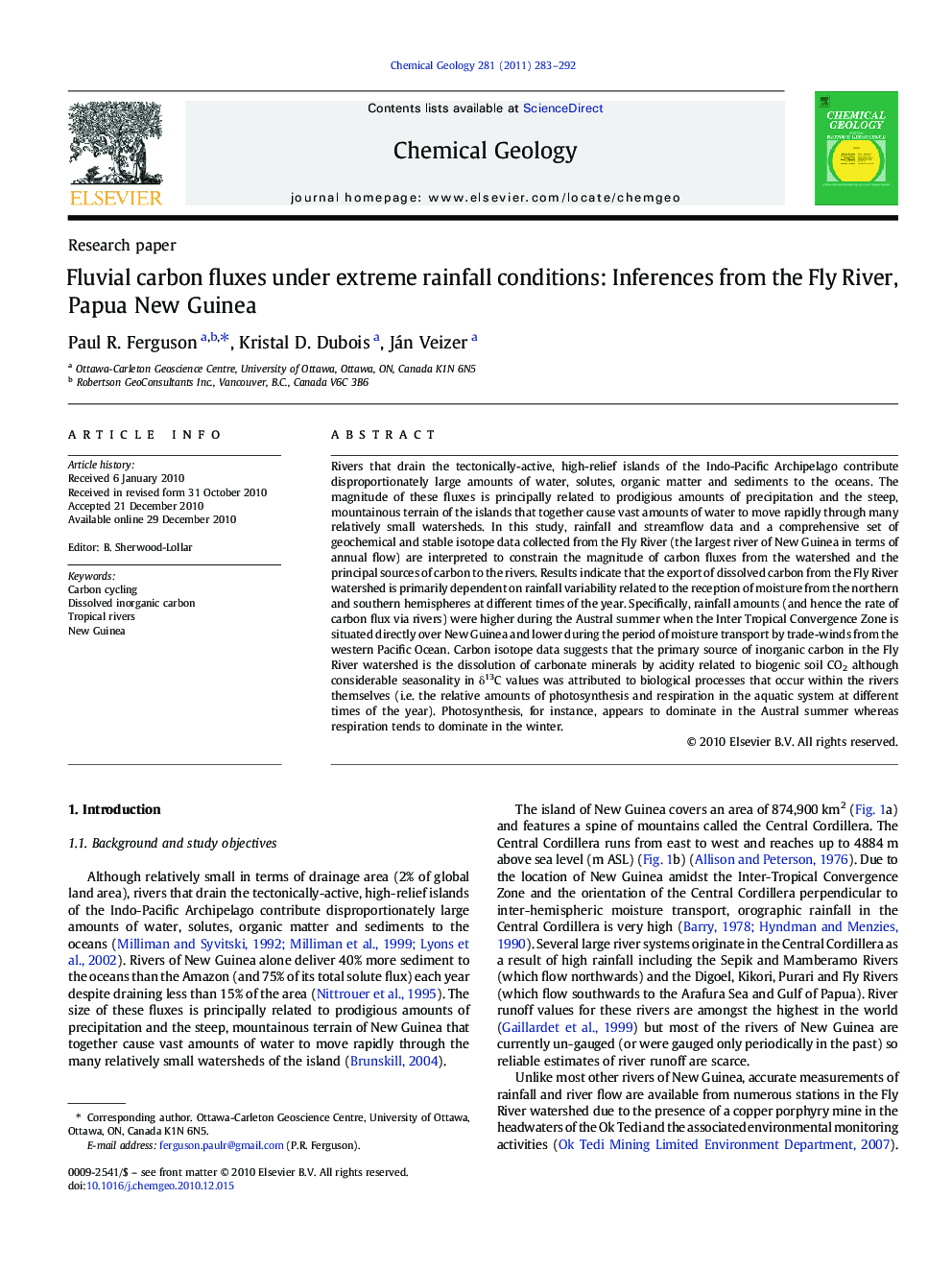| کد مقاله | کد نشریه | سال انتشار | مقاله انگلیسی | نسخه تمام متن |
|---|---|---|---|---|
| 4699747 | 1637673 | 2011 | 10 صفحه PDF | دانلود رایگان |

Rivers that drain the tectonically-active, high-relief islands of the Indo-Pacific Archipelago contribute disproportionately large amounts of water, solutes, organic matter and sediments to the oceans. The magnitude of these fluxes is principally related to prodigious amounts of precipitation and the steep, mountainous terrain of the islands that together cause vast amounts of water to move rapidly through many relatively small watersheds. In this study, rainfall and streamflow data and a comprehensive set of geochemical and stable isotope data collected from the Fly River (the largest river of New Guinea in terms of annual flow) are interpreted to constrain the magnitude of carbon fluxes from the watershed and the principal sources of carbon to the rivers. Results indicate that the export of dissolved carbon from the Fly River watershed is primarily dependent on rainfall variability related to the reception of moisture from the northern and southern hemispheres at different times of the year. Specifically, rainfall amounts (and hence the rate of carbon flux via rivers) were higher during the Austral summer when the Inter Tropical Convergence Zone is situated directly over New Guinea and lower during the period of moisture transport by trade-winds from the western Pacific Ocean. Carbon isotope data suggests that the primary source of inorganic carbon in the Fly River watershed is the dissolution of carbonate minerals by acidity related to biogenic soil CO2 although considerable seasonality in δ13C values was attributed to biological processes that occur within the rivers themselves (i.e. the relative amounts of photosynthesis and respiration in the aquatic system at different times of the year). Photosynthesis, for instance, appears to dominate in the Austral summer whereas respiration tends to dominate in the winter.
Research Highlights
► DIC in the Fly River is related primarily to dissolution of carbonate minerals.
► Biogenic soil CO2 is the major source of acidity involved in carbonate dissolution.
► Photosynthesis and respiration affects the 13C content of DIC in the Fly River.
Journal: Chemical Geology - Volume 281, Issues 3–4, 24 February 2011, Pages 283–292